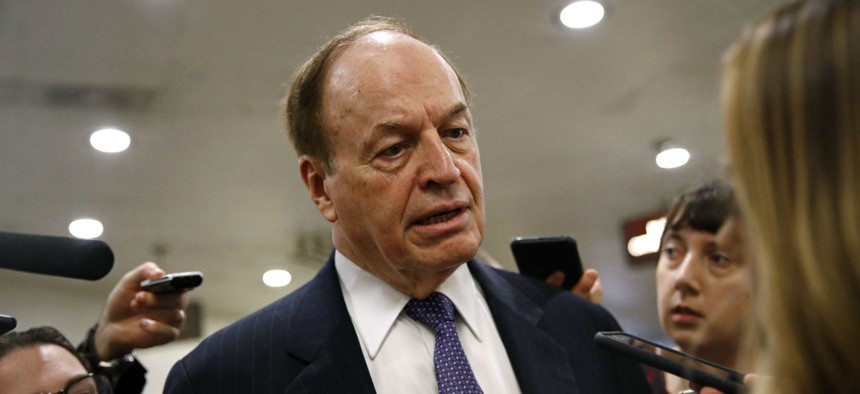
Sen. Richard Shelby, R-Ala., said the CR would be in the "ballpark" of funding agencies through February or March. Patrick Semansky/AP
Congress Appears Headed for Another Stopgap Spending Bill to Avoid Shutdown
Despite giving themselves seven extra weeks, lawmakers say it would take a "miracle" to avoid a Thanksgiving shutdown through normal appropriations.
Lawmakers appear resigned to another stopgap spending bill to avoid a government shutdown just before Thanksgiving, suggesting the two chambers of Congress remain too far apart to enact regular spending bills before that deadline.
Absent a “miracle,” according to the top appropriator in the Senate, Congress will be forced to enact another continuing resolution, the second of fiscal 2020. The current stopgap bill is funding agencies at their fiscal 2019 levels only through Nov. 21.
“Unless a miracle happens around here with the House and Senate, we will have to put forth another CR,” Sen. Richard Shelby, R-Ala., chairman of the Senate Appropriations Committee, told reporters earlier this week. He added it would likely be “in the ballpark” of funding agencies through February or March.
Shelby previously noted the negative consequences of funding the government stopgap by stopgap.
“The prospect of serial continuing resolutions—or worse, another government shutdown—casts a dark shadow over our previous success,” Shelby said on the Senate floor this week ahead of the chamber’s first vote on spending bills for fiscal 2020. “Such uncertainty also wreaks havoc on every federal agency’s ability to plan, and it is particularly acute when it comes to the military.”
The Senate this week easily advanced a package of appropriations measures to fund the departments of Transportation, Housing and Urban Development, Agriculture, Interior, Commerce, Justice and other agencies. Under a budget agreement signed by President Trump earlier this year, most agencies will receive a funding boost once full-year spending levels are set. The Senate is scheduled to resume consideration of that bill on Monday.
Even if the Senate is able to advance its own spending bills, it would still have to reconcile them with the House. The Democratically-controlled lower chamber has approved 10 of the 12 annual appropriations measures, largely along party lines. Lawmakers have indicated the two chambers have yet to agree to allocations for each of the 12 annual spending bills.
“House Democrats refuse to play politics with a government shutdown, and we will pass necessary legislation to keep the federal government up and running,” said Rep. Nita Lowey, D-N.Y., chairwoman of the House Appropriations Committee, on Friday.
In addition to the spending levels, several additional sticking points remain as lawmakers look to strike a funding agreement. Democrats have included several policy riders in their spending bills that could hold up negotiations, related to funding for a wall along the southern border, blocking the elimination of the Office of Personnel Management as an independent agency, abortion policy and other issues.
House Majority Leader Steny Hoyer, D-Md., had by last week already indicated Congress may need more time to reach a deal.
“We are prepared to cooperate with the administration and with our Republican colleagues to ensure that the government is funded and serving the American people and defending the American people,” Hoyer said. “The Senate has not passed any appropriations bills. We're concerned about that, but we're going to work very hard between now and Nov. 21 and thereafter if necessary—I hope it's not necessary—to get agreement so that the government can be operational.”
Senate Majority Leader Mitch McConnell, R-Ky., has said after his chamber clears its initial spending package, it will move to another “minibus” that includes funding for the departments of Defense, Health and Human Services, and Labor. Those measures have yet to receive the same bipartisan support given the initial set of spending bills.







